Christmas is both the most wonderful time of the year and a time of quirky traditions built over centuries. From spiders in Ukraine to KFC buckets in Japan to clever marketing in the USA, the festive season looks different across the world. Whether you’re a trivia buff or just a curious holiday enthusiast, we hope these intersting facts about Christmas jingle your bells – don’t forget to check our Trafalgar’s Christmas tours.
1. Jingle Bells wasn’t written for Christmas
One of the world’s most famous Christmas carols wasn’t even meant for December! “Jingle Bells” was originally written in 1857 by James Lord Pierpont as a Thanksgiving tune. The melody, called One Horse Open Sleigh, was meant to celebrate winter fun but it was catchy enough to infect Christmas playlists everywhere.
READ NEXT: The best Christmas songs from around the world
2. Not all Christians celebrate Christmas on the same day
While much of the world marks Christmas on December 25 (or the night before, starting on Christmas Eve), not everyone’s calendar matches. Many Orthodox Christians – including those in Russia, Ethiopia and Serbia – celebrate on January 7, following the Julian calendar. In Armenia, Christmas Day is January 6.
3. Japan eats KFC for Christmas dinner
Forget turkey and trimmings – in Japan, Christmas dinner often comes in a red-and-white bucket. Since the 1970s, a wildly successful campaign by KFC turned fried chicken into an annual festive tradition. Today, millions of Japanese families pre-order their Christmas buckets weeks in advance.
4. Iceland has 13 Santas
Iceland has 13 merry mischief-makers known as the Yule Lads. These quirky characters visit children on the nights leading up to Christmas. Each Lad has a unique personality – from Door-Slammer to Spoon-Licker. Good kids find treats in their shoes, while naughty ones get potatoes.
5. Christmas markets date back to the Middle Ages
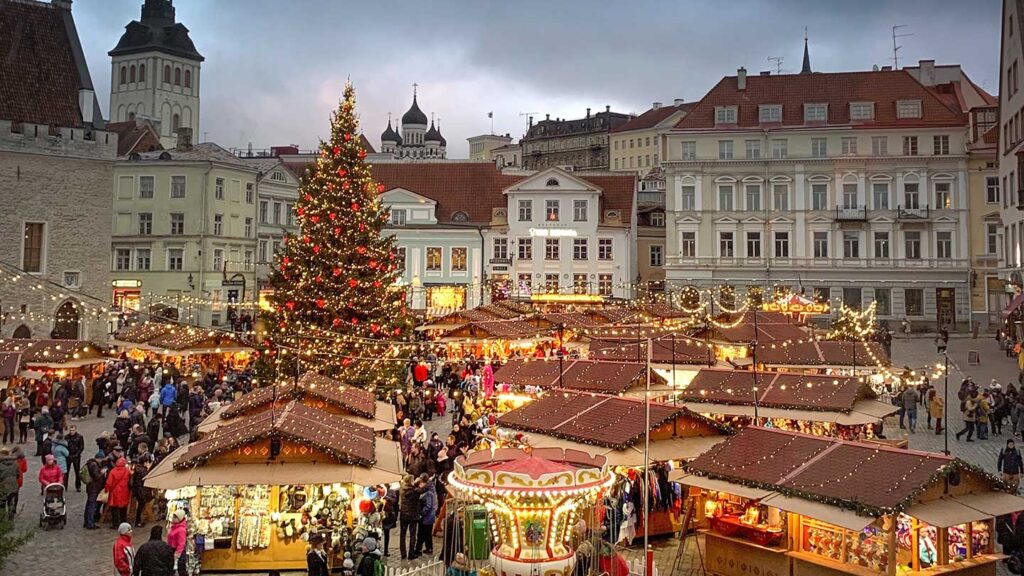

Christmas markets have been around for centuries! The oldest on record dates back to 1298 in Vienna, where townsfolk gathered for festive trading. By the 14th and 15th centuries, they spread across Germany, giving us today’s enchanting Weihnachtsmärkte. Seven centuries later, sipping glühwein by fairy lights is still a European essential – and something you can do on one of Trafalgar’s Christmas market tours and river cruises.
6. The world’s tallest Christmas tree was in Seattle
The most tree-mendously tall Christmas tree ever recorded was erected in 1950 at Seattle’s Northgate Shopping Center. This massive Douglas fir stretched to a whopping 67 metres – taller than a 20-storey building. Imagine the size of the ornaments needed to deck those branches.
7. The Statue of Liberty is the biggest Christmas gift
The world’s most famous lady in green is technically a Christmas present. In 1886, France gave the Statue of Liberty to the United States as a festive gift, weighing an astonishing 204 metric tons. Pretty cool to unwrap a colossal landmark instead of an ugly sweater or socks!
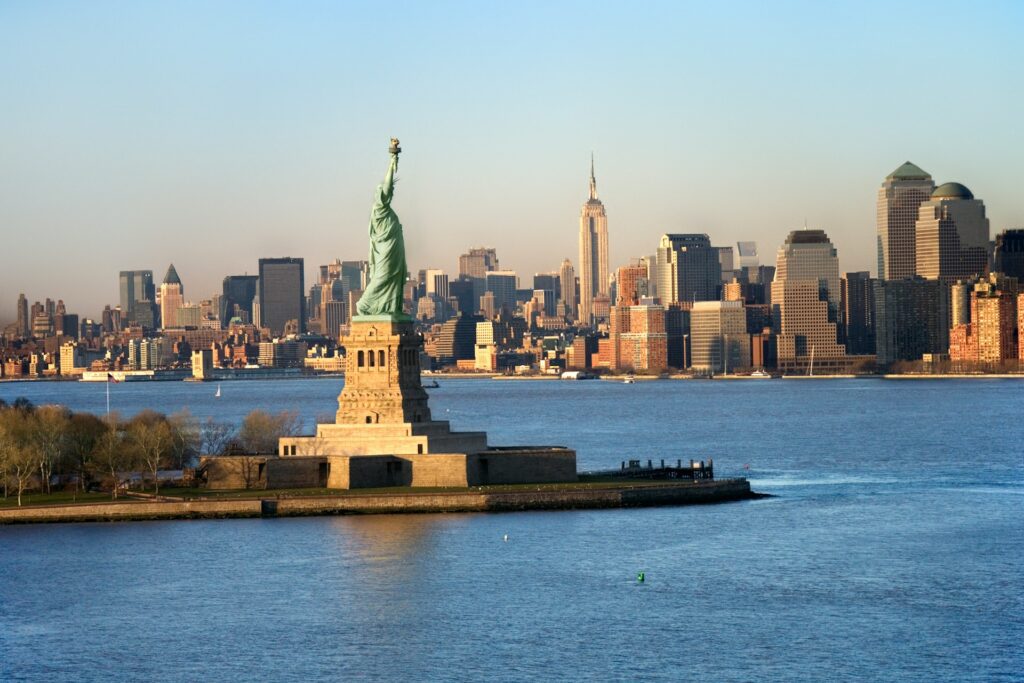

8. “Xmas” isn’t a new abbreviation
Worried that “Xmas” is a modern shortcut stripping away tradition? Fear not. The “X” actually comes from the Greek letter Chi, the first letter of “Christos.” This shorthand has been around since at least the 16th century, with sacred origins rather than cynical ones. So the next time someone signs “Merry Xmas” don’t call the grammar police.
9. The first artificial trees were made of feathers
In 19th-century Germany, the very first artificial Christmas trees were made from goose feathers dyed green. These feathered firs gave forests a break from logging and offered households a reusable option.
READ NEXT: German Christmas traditions: seasonal foods, festivities, and folklore
10. And tinsel used to be made of silver
Think tinsel is a cheap look for your tree? Well, the Christmas bling was once top-tier luxury. In 17th-century Germany, artisans hammered thin strands of pure silver to drape across Christmas trees. Under candlelight, the shimmering effect was magical.
11. Rudolph was invented for a department store
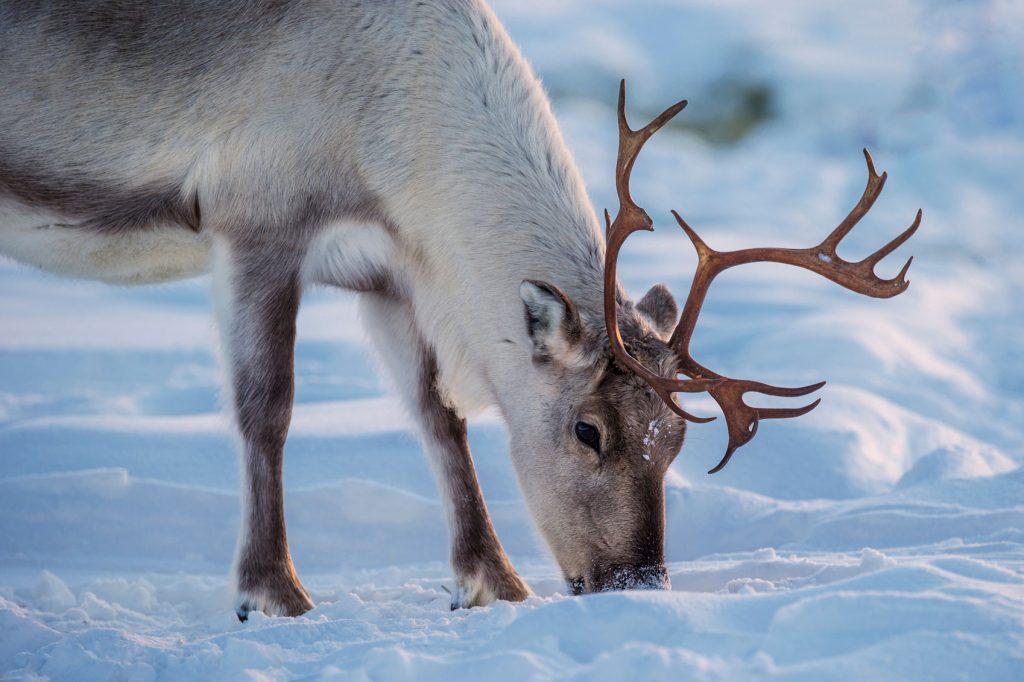

Everyone’s favourite red-nosed reindeer wasn’t born from folklore, but from marketing. In 1939, a Chicago department store, Montgomery Ward, asked copywriter Robert L. May to create a children’s Christmas booklet. Enter Rudolph, the underdog reindeer with a glowing nose. The story became a smash hit!
12. Coca-Cola popularised Santa’s red suit
Speaking of marketing… Santa Claus used to come in many colours (think green, blue, even brown). But Coca-Cola’s 1930s ad campaigns dressed him in bright red and it seems to have stuck ever since. While the soda brand didn’t invent Saint Nicholas, it certainly gave him his signature style.
13. Every Christmas Norway sends England a tree
Each December, a towering spruce appears in London’s Trafalgar Square – a gift from Norway. Since 1947, the Norwegians have sent this tree as thanks for Britain’s support during World War II. Standing more than 20 metres tall, it’s decorated in traditional Norwegian style with vertical strings of lights.
14. Christmas was once banned in America
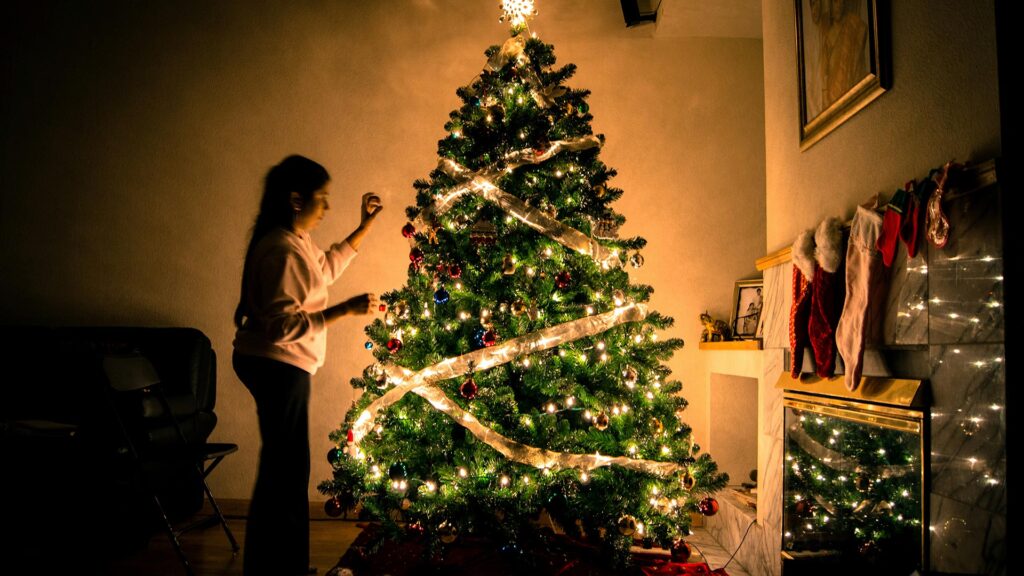

Believe it or not, Christmas used to be illegal in Massachusetts. The Puritans banned it in 1659, claiming the celebration was sinful excess. Anyone caught feasting or showing festive cheer was fined five shillings. The ban lasted until 1681, but suspicion lingered and Christmas only became a federal holiday in the U.S. in 1870 – nearly two centuries later.
15. The first Christmas card was controversial
In 1843, Sir Henry Cole of London commissioned the first-ever printed Christmas card. It showed a family raising glasses of wine, including a child sipping merrily. Scandalous! Still, the idea caught on and today, billions of cards are sent worldwide each holiday season.
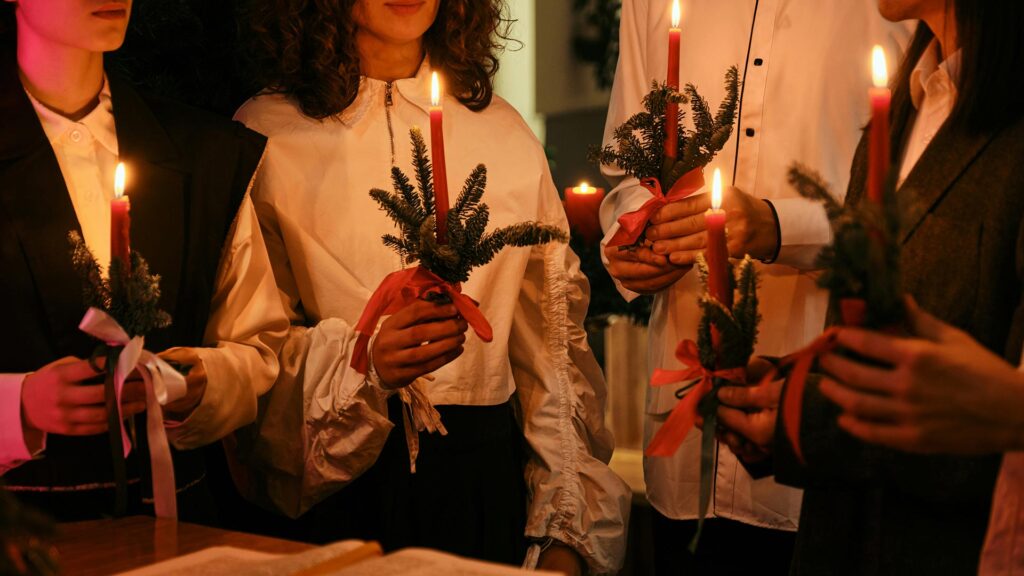

16. “Silent Night” is the most recorded carol
First performed on Christmas Eve in 1818 in Oberndorf, Austria, “Silent Night” quickly spread far beyond its humble church origins. Since then, it has been translated into over 300 languages and holds the Guinness World Record as the most recorded Christmas carol with everyone from Bing Crosby to Beyoncé singing the tune.
READ NEXT: Christmas in Austria: traditions, food and festivities
17. The world’s largest snowflake was plate-sized
A snowflake reportedly measuring 38 cm wide drifted to the ground in Montana in 1887. That’s bigger than a dinner plate! While scientists still debate the claim, locals in Fort Keogh swore by it.
18. Italy has La Befana, the Christmas witch
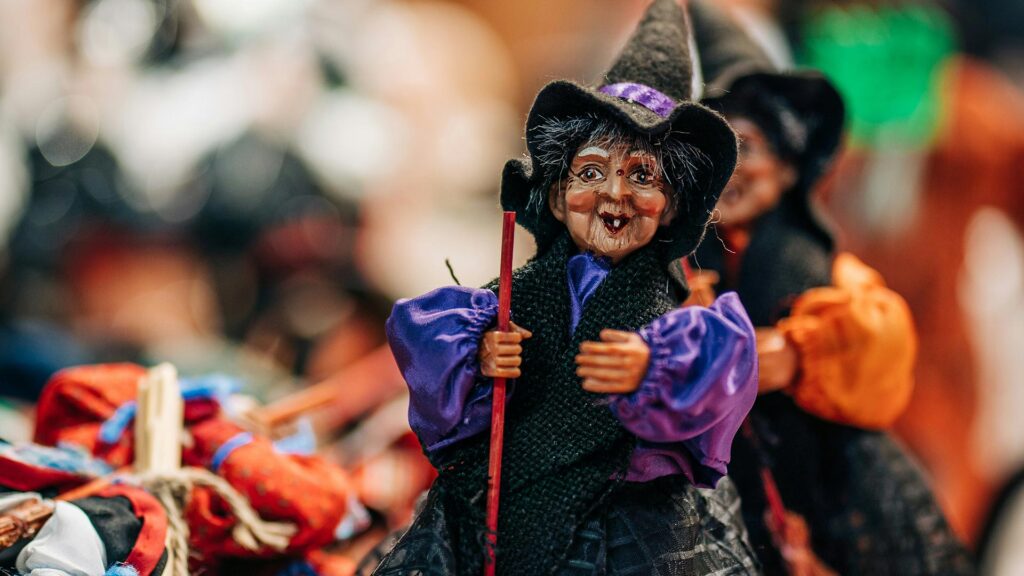

On the night of January 5th, children in Italy await La Befana, a kindly old witch who swoops down chimneys to deliver gifts and sweets. According to legend, she missed the Wise Men’s journey to Bethlehem and has been searching for the Christ Child ever since. Good kids get candy, naughty ones get coal – proving she’s both festive and fair.
READ NEXT: 12 unique Christmas vacation ideas for a family reunion
19. Poland sets an extra plate at dinner
On Christmas Eve, Polish families set one extra place at the table. Why? Tradition says it’s for an unexpected guest or to honour loved ones who’ve passed away. It’s a small gesture of kindness and hospitality that captures the season’s spirit. There’s always room for one more at Christmas.
20. Carolers once demanded pudding
The classic tune “We Wish You a Merry Christmas” isn’t just about spreading cheer – it’s a demand for dessert. In 16th-century England, carolers would sing it outside wealthy homes, insisting on figgy pudding (and threatening not to leave until served).
21. Santa has his own postal codes
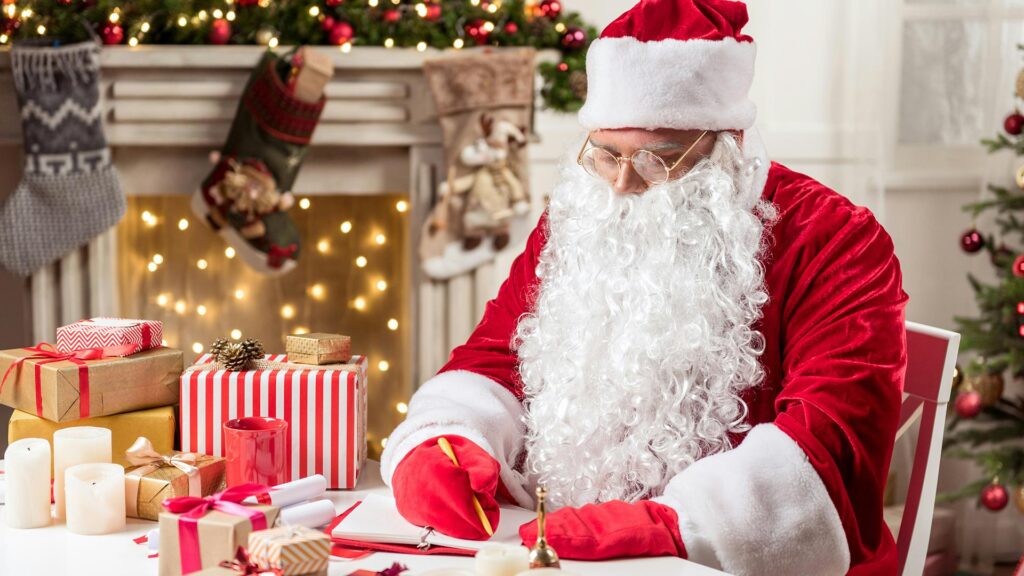

Every year, millions of letters flood in for Santa. In Canada, kids can address letters to H0H 0H0 (a nod to his iconic laugh), while Finland’s Santa Village receives half a million letters annually.
22. Santa Claus is based on a real person
The jolly man in real. Santa Claus is inspired by Saint Nicholas of Myra, a 4th-century bishop known for his generosity. One legend says he secretly tossed bags of gold into the stockings of three poor sisters. Over centuries, St. Nick’s story spread across Europe, evolving into Father Christmas, Sinterklaas, and finally the Santa we know today. Proof that kindness never goes out of style.
23. In Ukraine, spiders bring good luck
Forget baubles – Ukrainian trees are often adorned with glittering spiderweb ornaments. This comes from a folk tale about a poor widow whose tree was magically spun into golden webs by kind-hearted spiders. Today, webs are seen as symbols of good fortune.
24. Prince Albert popularised the Christmas tree
While decorated trees are now a Christmas staple, it was Prince Albert – Queen Victoria’s German husband – who made them fashionable in Britain. In 1848, an illustration of the royal family gathered around their decorated fir tree was published, and soon every household wanted one. But the idea of evergreen decoration goes back even further – the Romans celebrated Saturnalia by decking homes with greenery.
25. Candy canes originated in Germany


Candy canes are believed to have started in Germany in the 1600s, when a choirmaster gave sugar sticks bent into shepherd’s crooks to keep children quiet during long Christmas services. The peppermint flavour and stripes came later, but the shape stuck. From church pews to Christmas stockings, candy canes have been a holiday favourite for centuries.
Those are our 25 fun and interesting facts about Christmas. Which one surprised you the most? Leave us a comment….